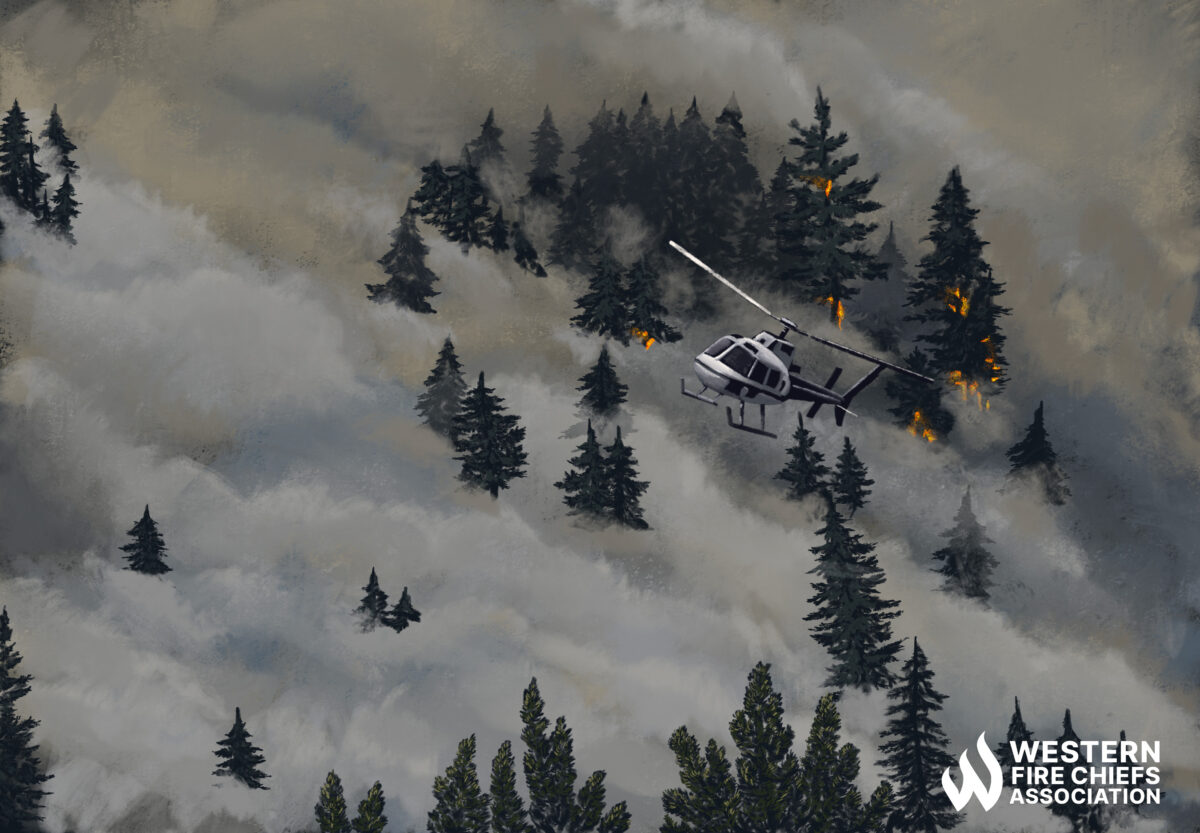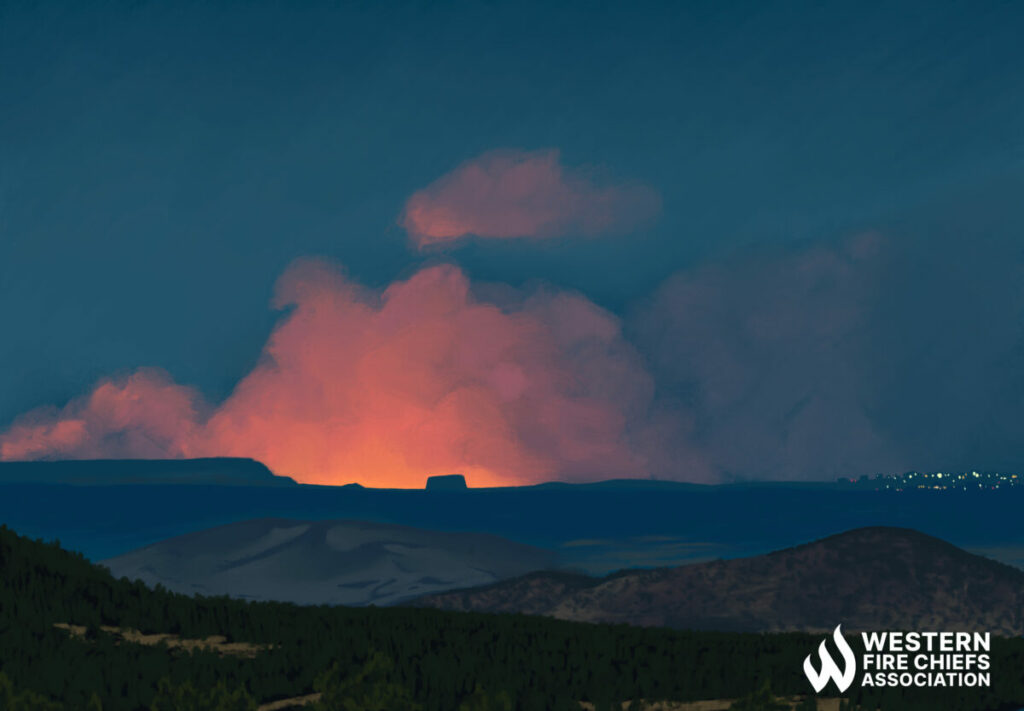Fire Pit Safety Tips
Stay safe around the campfire with tips from the Western Fire Chiefs Association. Learn essential precautions and practices for a worry-free outdoor campfire.
Explore wildfire mitigation examples and detailed considerations to protect your home curated by the experts at the Western Fire Chiefs Association (WFCA).
Published:January 10, 2023
Edited:March 1, 2024

Explore wildfire mitigation examples and detailed considerations to protect your home curated by the experts at the Western Fire Chiefs Association (WFCA).
When considering how best to protect homes and neighborhoods from wildfire damage, the first step should always be early wildfire mitigation. Before there is even a threat of fire, homeowners can protect their houses by evaluating the area around the home and how it can be managed to stop or slow fires. Areas where homes are built close to wildland zones are particularly at risk. This ‘wildland-urban interface’ represents a key space where communities are working together to practice wildfire mitigation.
The California Board of Forestry and Fire Protection divides the defensible area around a home into three sections that start at the house with Zone 0, move out to 30 feet from the house with Zone 1, and finally extend to 100 feet from the house with Zone 2.1 The National Fire Protection Association defines this entire area as the home ignition zone.2 WFCA addresses these zones more in-depth in our Home Ignition Zone Explained article. You can protect your home from the spread of wildfire by taking mitigation steps in each of these three zones.
The first area to defend is the house itself and within 0-5 feet of the structure.
The second area of the home defense against wildfire is between 5-30 feet from the house. This is a zone where you can build out your home’s defensible space with landscaping and prevent fire from spreading from your yard to your house.
The third zone extends up to 100 feet away from your house. This is the area where you can interrupt fires, reduce the size of flames, and keep fire lower to the ground with landscape planning.12
Community awareness and engagement are essential to help mitigate wildfire risk. While property line boundaries between neighbors are clearly defined, wildfire does not recognize any boundaries. Neighborhoods often have overlapping defensible space, and communities can share resources for hardening homes and landscaping yards to protect houses from wildfire while maintaining an aesthetic that the homeowners appreciate. Read on to see some examples of how communities throughout the US have banded together over the years and decades to reduce their wildfire risk.

The state of California has a fire plan that begins before fires even start. As fire risks are identified, specialists note where to install fire breaks, harden and build out home ignition zones around homes, manage forests and wildlands, and promote fire-safe landscaping. The goal is to reduce the cost and danger of firefighting, reduce property loss, and ensure the health of California ecosystems.
In 1998, the California Department of Forestry and Fire Protection saw that Willow Springs in Tuolumne County, CA, was at high risk for wildfire. Homeowners in the area were encouraged to create a Firewise® site by clearing flammable vegetation from their properties.14 When the Caylor Fire began on July 14, 1999, and started to spread toward the Willow Springs subdivision, the homeowners’ hard work paid off; the fire did not burn into their neighborhood. Firefighters could focus on the fire in the wildland, secure in the knowledge that residents had taken wildfire mitigation steps to protect their homes.
Bill Trimarco is the Program Manager for Wildfire Adapted Partnership (formerly FireWise of Southwest Colorado) in Archuleta County, CO. He experienced the value of community engagement and word of mouth when offering free wildfire risk assessment and professional mitigation work to Aspen Springs, CO residents on an eight-year project that was completed in 2021.
The Aspen Springs area was at high-risk for wildfires. Most residents lived off the power grid on an acre of their own land. The area had narrow dirt roads and crowded vegetation, with no municipal water or sewer systems and spotty electricity. In working with residents to reduce wildfire risk on their properties, Trimarco found compromises to satisfy property owners while still protecting their homes. While removing firewood and leaf litter from the area around the home is an essential, non-negotiable wildfire mitigation step, Trimarco says, “A ‘pet tree’ that someone’s grandmother planted too close to the house 40 years ago does not necessarily have to be cut down if some other adjustments can be made.”15
Trimarco’s organization performed mitigation work on 43 properties and 107 acres in the Aspen Springs subdivision over three years. Residents told each other about the fire mitigation opportunity, encouraged neighbors to apply, and volunteered their time to rake pine needles and move flammable materials out of Zone 0 and Zone 1. They continue to speak about how happy they are with the changes, even years after mitigation efforts were completed on their properties. According to historic fire regimes, Aspen Springs is over 140 years overdue for a wildfire. Trimarco is hopeful that the mitigation efforts residents have made will make a difference when a fire affects the area.
The small coastal California community of Montecito began wildfire mitigation activities in 1994 and saw their hard work pay off two decades later. The community raised awareness among Montecito residents about the ways to mitigate wildfire risk around their homes, including clearing and thinning vegetation and creating shaded fuel breaks on their property.16 The Montecito Fire Protection District (MFPD) conducted public outreach and offered free resources, such as risk assessment and a neighborhood wood chipping program to make it easier for residents to remove flammable material from their properties.
Over a span of 23 years, the MFPD learned about resident needs, language barriers, and financial barriers to making wildfire mitigation changes to homes. Specialists helped find grant money or other inexpensive solutions so that residents could afford to build out their properties’ defensible zones. The community also created a protection plan and evacuation plan that all residents understood.
When the Thomas Fire swept through the area in December 2017, it burned more than 1,000 structures before it was contained in January 2018. In the month-long blaze, the community of Montecito only lost seven buildings. This was a very small amount of property damage, considering how the Thomas Fire affected the area and the severity of the wildfire. The mitigation efforts that Montecito residents took in the decades prior helped to protect the community from these devastating flames.
There are more wildfire mitigation success stories discussed on the Fire Adapted Communities Learning Network. Read more here.
Stay safe around the campfire with tips from the Western Fire Chiefs Association. Learn essential precautions and practices for a worry-free outdoor campfire.
Discover essential firework safety tips to ensure a dazzling display without accidents. Learn how to celebrate responsibly with expert guidance from WFCA.
Explore the role of AI in wildfire prediction with guidance from the WFCA. Learn how advanced algorithms and data analytics enhance early detection and response.